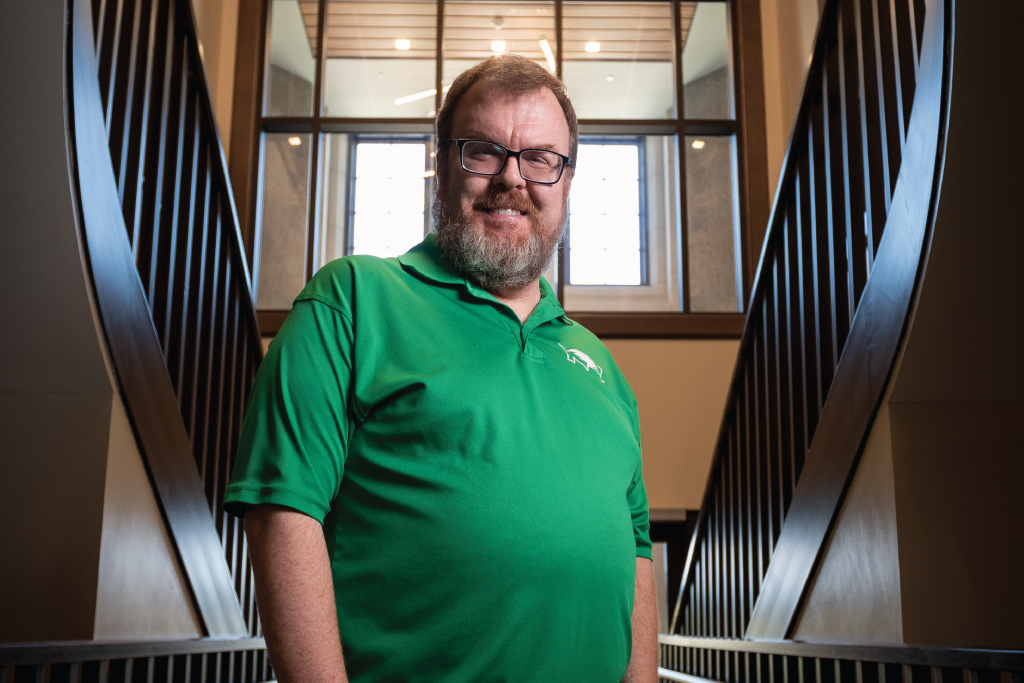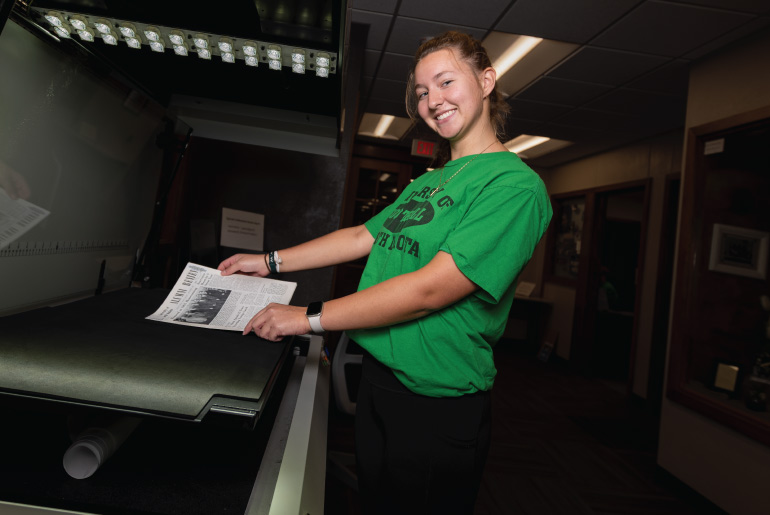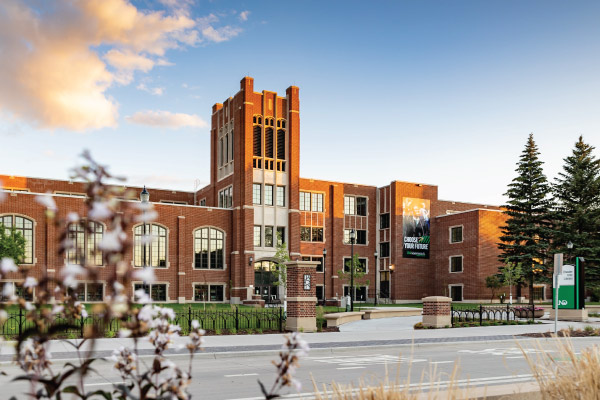Digitizing a Century
Employees at the Elwyn B. Robinson Department of Special Collections have spent the past year tackling its largest digitization project to date.
Tucked away on the fourth floor of the Chester Fritz Library, the team is bringing 100 years of the UND Alumni Magazine online. Student employee Ava Leifur, a senior majoring in kinesiology on the athletic track, scanned, cataloged, and prepared decades of magazines for the digital collection.
While scanning old issues, Ava noticed many familiar names. “I’d be doing my work, making sure the picture showed up, and I’d flip a page and think, ‘That guy looks familiar,’” she said. “I’d read the fine print, and sure enough, it would be my great-grandfather.”
Ava comes from a long line of UND graduates — including her parents, grandparents, several great aunts and uncles, two uncles, and an aunt — and grew up hearing UND-NDSU rivalry stories from her dad and grandfather, both former UND football players.
As she digitized the magazines, she spotted stories about her great-grandfather, Conrad William Leifur, of classes 1923 and 1932, winner of the Sioux Award for Distinguished Achievement & Leadership in 1963 and author of “Our State, North Dakota.” She also found a 1994 article about the Nickel Trophy, the oversized 1937 Buffalo nickel awarded to the UND-NDSU football winner, stolen during the ’90s when her dad, Thomas Leifur, ’97, played at UND.
“I just loved the fact that I was learning more about UND,” Ava said. “It was such a fun process.”

Head of Special Collections Curt Hanson.
A Digital Shift
While Special Collections might sound like a dusty department where stern librarians guard fragile treasures, meeting Head of Special Collections Curt Hanson quickly dispels that image. His favorite word for the work here is “cool.”
“By saying, ‘I find this to be cool. This matters to me,’ the students give value to our collections,” he said.
In his 25 years at UND, Curt has seen many changes. Renovations made the library more welcoming, and the shift to digital access has transformed Special Collections. “We have such a digital focus right now,” he said.
“Now that the Alumni Magazine is online, we can meet a much bigger audience,” Curt said.
Curt partnered with Zeineb Yousif, CFL’s Interim Head of Discovery, to structure the magazine collection decade by decade, while Ava handled the scanning and cataloging. Each issue was run through software that enables users to search by name, date, or topic.
Why It Matters
“The Alumni Magazine provides a wonderful record of UND’s history,” Curt said. “Making it searchable and accessible online lets alumni and researchers explore that history in a way that was never possible before.”
Some numbering mistakes occurred over the decades, but the staff carefully noted the dates. “I’m willing to bet any publication that’s been around for 100 years inevitably messes up on the volume,” Curt said.
“One thing that has not changed about the Alumni Magazine is the emphasis on alumni updating themselves and talking about what they’re doing,” he said. “Any alumni who are genealogists are going to find this to be just great. This is more detailed than simply birth, marriage, or death records. You see highlights of what they consider to be important events in their career. It gives a little bit of flavor. It’s more than just dates; there’s also character.” ///
The Alumni Magazine provides a wonderful record of UND’s history.Curt Hanson
A Favorite Find
One document stands out among the billions of pieces of paper housed in Special Collections — and it’s Curt Hanson’s favorite.
“It’s titled, ‘Do I Run or Don’t I?’” Curt said.
Written in 1980 by Dagne (Borg) Olsen, ’55, a North Dakota farm wife considering a run for the state House of Representatives, the seven-page document chronicles her decision-making process.
“She lays out the positives and the negatives to her decision to run,” Curt said. “It was unique because it wasn’t sanitized; it was her raw emotions. That’s my favorite seven pages in the billions of pieces of paper that I have up here.”
The document also carries a personal connection for Curt: Dagne’s son, Doug Olsen, ’89, is one of his best friends.



